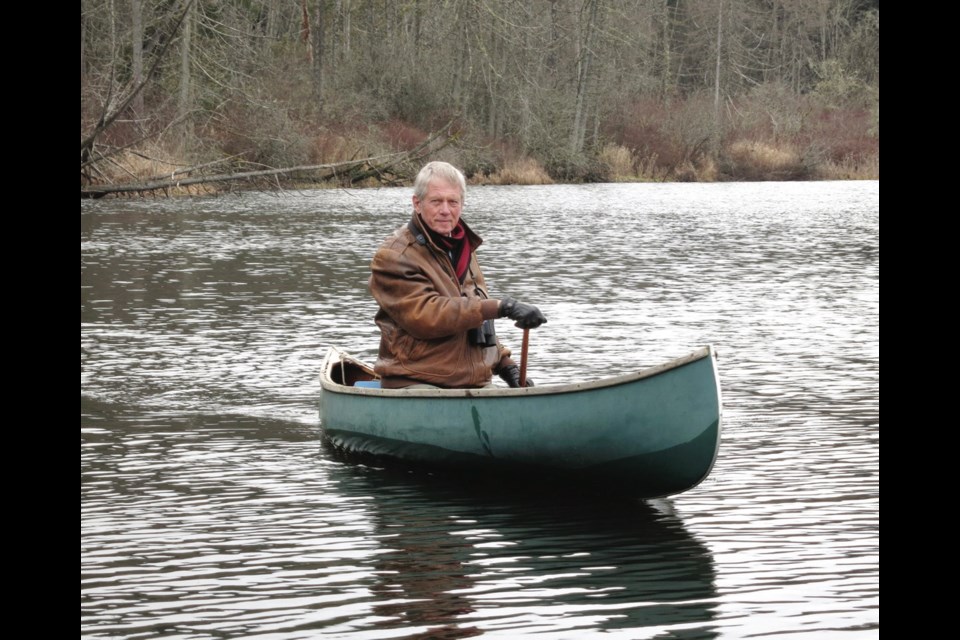What: Robert Bateman’s Canada book launch
Where: The Robert Bateman Centre in the Steamship Terminal (470 Belleville St.)
When: Saturday, Nov. 4, 7 p.m. (doors open at 6:30)
Tickets: $10 (seniors and students $8.50; youth 6-18 $6)
Note: Free for Bateman Foundation members
Salt Spring Island painter Robert Bateman experimented with various styles during his youth — including cubism, abstract-expressionism, impressionism and post-impressionism — before settling on realism when he turned 30.
The decision has served him well, with more than 1,000 paintings to date. “I think it is the only style that suits me,” said Bateman, 87. “From 1900 until the mid-1960s, what was disappearing from art was subject matter. And what was increasingly in was paint — period. Subject matter was a no-no. When Andrew Wyeth came along, it was OK to do subject matter.”
It was at a 1962 exhibition by Wyeth that Bateman felt a stylistic shift. “I fell off my abstract horse. He was the first realist who was accepted by the art establishment. I said: ‘This is the guy for me.’ ”
Bateman’s style has been refined over decades, to the point where his landscapes and wildlife portraits now rank among the most popular and well-known in Canada, with more than 600 of his paintings in print. His work has been compiled into a new book, Robert Bateman’s Canada, which arranges 58 of his paintings — 20 of which are presented here for the first time — into seven regions: Great Lakes-St. Lawrence Lowlands, Canadian Shield, Prairies, Mountains, West Coast, Arctic and East Coast.
Bateman will launch the book on Saturday with a party and presentation at The Robert Bateman Centre. He will be there to meet with guests, something he enjoys doing. In fact, Bateman said he enjoys promotion almost as much as painting. “Although that’s what I do, that’s the hardest part of my life — struggling with the paintings,” he said with a laugh. “The easiest part of my life is going around chatting about them afterwards.”
His work has been the subject of more than a dozen similar books in the past, but Robert Bateman’s Canada differs in one regard. “This is only about Canada,” he said. “The others have been what you would call art books, and this is an art book, too. But the other books have been about my paintings, and themes. This one is strictly about Canada, and it’s done in a regional way.”
Bateman, who is from Ontario, but has lived on Salt Spring Island for nearly two decades, has pretty much seen and done it all when it comes to Canada. He didn’t attempt to cover all the bases in the book, preferring instead to offer snapshots of each region. Each chapter includes a short introduction from Bateman, but the images are presented without much in the way of accompanying text or chronological order.
A single new painting, Stranded Boats and Gulls, which he painted this year, is included; the rest date back to the mid-1970s. Fans will immediately recognize each one as a Bateman work. “They have geographical breadth and subject-matter breadth, but as far as when I did them, that’s irrelevant,” he said. “My style has not changed. Unlike Picasso, who went through different styles and different periods, I got that out of my system in my 20s.”
Bateman has been painting since he was 12. He focused on wildlife until 1948, when a friend at the Ontario College of Art suggested a switch to big, bold painting that required him to “slap on the paint,” Bateman said. He did as his friend suggested. “I gave up my detailed art through my 20s, and became an impressionist and a post-impressionist. I always tried to keep au courant or up to date with what was going on in the capital-A art world.”
He was a cubist painter until abstract-expressionism came along in the 1950s and ’60s. An important thread emerged around this time. Through all the stylistic changes of his early years as an artist, however, Bateman always painted in nature. It didn’t seem strange at the time, but the irony — of ignoring his true path while being physically immersed in it — was thick. “I was right out in the open air painting these big, bold, splashy abstracts,” he said.
When he dedicated himself full-time to realism, he experienced resounding success. Portraits of Nature: Paintings by Robert Bateman, his 1987 exhibition at the National Museum of Natural History at the Smithsonian Institution in Washington, D.C., drew the largest crowd for a living artist at the time.
Bateman has made good use of his standing in the years since. In addition to being appointed an Officer of the Order of Canada in 1984, and a Member of the Order of British Columbia in 2001, he has been given honours for raising environmental awareness.
His paintings, by the nature of their subjects, chronicle a world in decline. There’s no better example of that than the West Coast chapter of Robert Bateman’s Canada. In addition to paintings documenting staples of the coast — geese, orcas, seagulls and Sombrio Beach — Bateman included two images of Carmanah Valley. A self-portrait of Bateman leaning against a felled ancient Sitka spruce, with industrial machinery in the background, sits opposite the image of a two-frame painting labelled Carmanah Contrast. In one, lush green forest blooms; the other depicts a clearcut.
“Industrializing nature is the dreadful mistake of the 20th century,” Bateman said. “Industrial fishing, industrial forestry, industrial farming — nature does not lend itself to industrial application. If we are going to have a future for our grandchildren, we have to be careful and treat nature with respect.”

.png;w=120;h=80;mode=crop)

